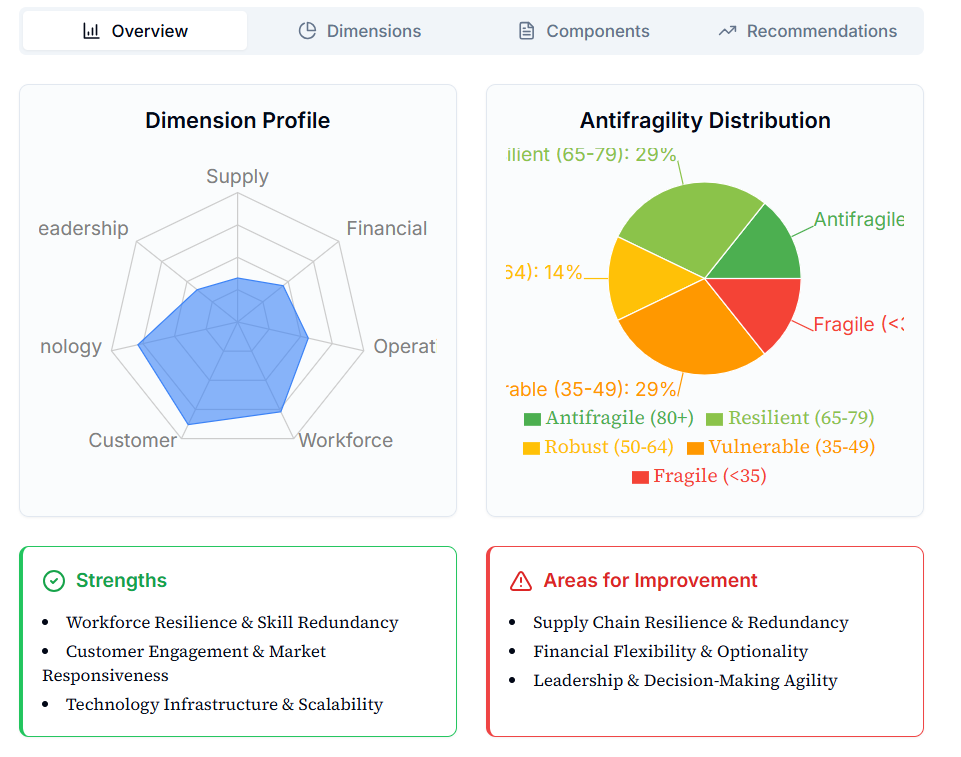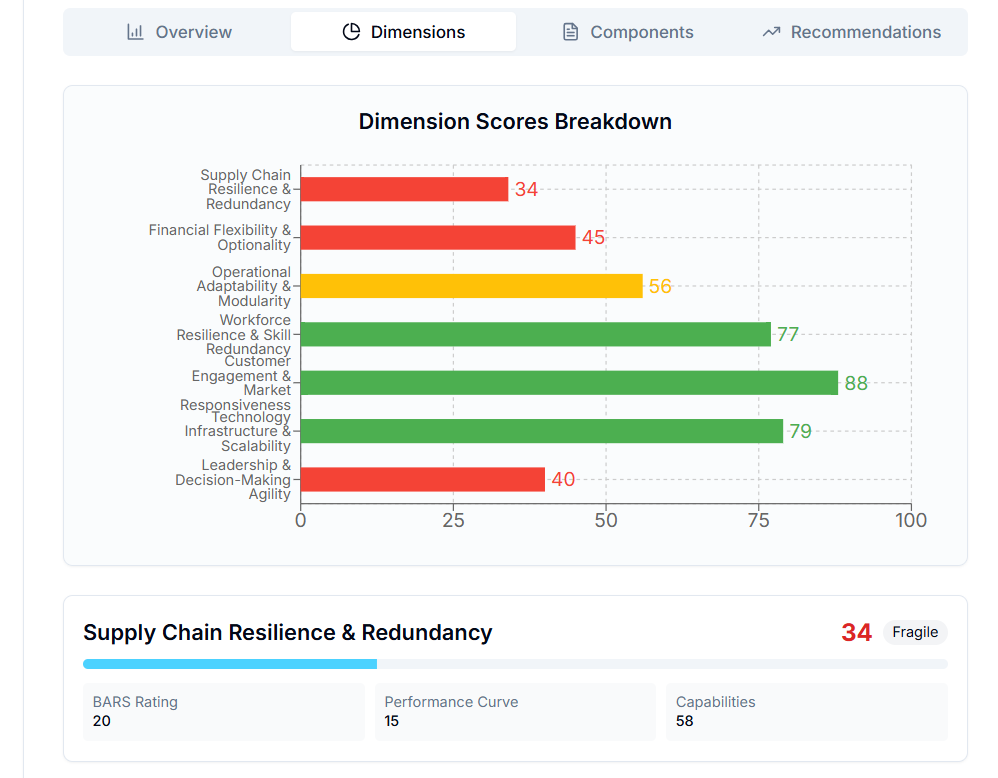Antifragility Framework
Systems that gain from disorder and uncertainty, developing beyond mere resilience.
Beyond Resilience: The Antifragility Concept
Antifragility goes beyond resilience or robustness. While resilient systems resist shocks and stay the same, antifragile systems actually improve and grow stronger when exposed to volatility, randomness, and stressors.
Our Antifragility Framework provides organizations with practical tools to assess and enhance their antifragility across various dimensions - from supply chain resilience to decision-making structures, from adaptive learning capabilities to financial flexibility.
Antifragility Assessment Tools
We've developed two assessment tools to help organizations evaluate their antifragile capabilities. Select the tool that best fits your needs and context.

This targeted assessment evaluates your organization's antifragility across seven key business dimensions:
- Supply Chain Resilience
- Financial Flexibility
- Operational Efficiency
- Profit Resilience
- Traffic Diversification
- Customer Value Optimization
- Channel Diversification
Ideal for business leaders and managers looking to assess their current business model's antifragility and identify specific improvement opportunities.

Our comprehensive assessment report, including output in pdf reader format, provides you with:
- Overall antifragility score with detailed breakdown
- Visual dimension profile showing strengths and weaknesses
- Dimension-by-dimension analysis with component scores
- Actionable recommendations to improve your antifragility
- Technical appendix for validation and deeper understanding
- Explore the depth and breadth of our antifragility analysis.
This sample provides a glimpse into the practical value of our full assessment. You'll see how we break down complex concepts into understandable metrics and offer clear, implementable steps to enhance your organisation's ability to benefit from volatility and change.
Theoretical Background
The Antifragile Concept
Introduced by Nassim Nicholas Taleb in his book "Antifragile: Things That Gain from Disorder" (2012), antifragility describes systems that benefit from stressors, volatility, and random events.
Introduced by Nassim Nicholas Taleb in his book "Antifragile: Things That Gain from Disorder" (2012), antifragility describes systems that benefit from stressors, volatility, and random events.
Taleb argues that antifragility is fundamentally different from resilience or robustness. While resilient systems withstand shocks and recover, antifragile systems actually improve from disorder. They get stronger, smarter, and more capable when faced with volatility, within certain limits.
Key Principles
- Optionality: Maintaining multiple options and the freedom to choose among them
- Redundancy: Building in spare capacity and backups that seem inefficient during normal times
- Barbell Strategy: Combining extreme risk aversion in some areas with risk-seeking in others
- Via Negativa: Improvement through subtraction rather than addition
- Skin in the Game: Ensuring decision-makers face consequences of their decisions
"Wind extinguishes a candle and energizes fire. Likewise with randomness, uncertainty, chaos: you want to use them, not hide from them. You want to be the fire and wish for the wind."
Applying Antifragility
Organizations can apply antifragility principles by maintaining optionality, embracing small failures as learning opportunities, and developing systems that respond positively to volatility. This might include decentralized decision-making, innovation portfolios, and stress-testing practices.
Antifragile supply chains go beyond just-in-time efficiency to incorporate strategic redundancy, supplier diversification, and local production capabilities. While potentially less efficient during stable periods, they outperform during disruptions and adapt more quickly to changed conditions.
Traditional risk management focuses on identifying and mitigating known risks. Antifragile risk management accepts that many risks cannot be foreseen and instead builds systems that can absorb shocks, learn from them, and come back stronger—regardless of the specific nature of the disruption.
Ready to Assess Your Organization's Antifragility?
Take our antifragile assessment to evaluate your current antifragile capabilities and receive targeted recommendations.